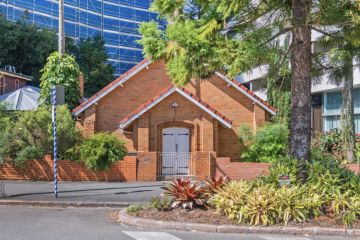Checklist: Before you buy a house
The main areas that you should cover are listed below. To make it easier for you, have a look at our Buyer’s Checklist.
What to check?
The property
There are a number of inspection options, from do-it-yourself to professional help. Amongst other things, check:
- the structure of the building, for example the foundations, plumbing, wiring, dampness, cracks in the walls;
- whether there is any part of a building that overhangs an adjoining property;
- the condition of the fences;the gutters, eaves, roof, exposed pipes;
- is there cracking?
- any signs of rain damage or leaks?
- any council notices about local flooding?
- do all the electricity switches work and the state of the wiring?
- water pressure and plumbing?
- the drainage from the bath and other outlets?
- any signs of rising damp?state of the roof, tiles, and guttering?
Building and pest inspections
Potential buyers often hire a building consultant or architect to determine the fitness of the property. There are a number of commercial building advisory services that can undertake these tasks.
Some will provide a guarantee with their services. If you want to find an inspection report from a professional building inspector look under ‘Building Inspections and Building Consultants’ in the Yellow Pages
If you are purchasing a property next door to a major construction (e.g. a block of units being built) you might want to obtain a status report – this may be useful if, at a later date, you attempt to make a claim for damage that results from structural damage that apparently has been caused by the development.
At the least you might want a professional opinion as to the potential for damage. Another major advantage is that the report will give you a guide to any future expenses.
For example, it may affect the offer you are prepared to make if you know that distorted walls will require significant rectification; or if renovations are more “cosmetic” than substantial, or in the worst case scenario, are unauthorised.
Checking the boundaries
Okay, this may sound a little far-fetched, but can you be certain that the actual boundaries of the property correspond to those on the title?
Check the measurements of the boundaries – as an added bonus, you will get a good look at the fences. Better to find out now if your fences or any structures encroach onto your neighbour’s property!
And take this opportunity to check out the state of repair of the fences (fences cost money!).
Types of title
There are a number of different types of title used throughout Australia. For example:
- Torrens title – this is the most common title, and gives the buyer a guarantee of “good title” because the title is registered.
- Strata title – this is used for many flats, units and multiple living areas such as retirement villages. You usually get a title for your individual unit as well as one for your parking space (if you get one). You also have responsibilities for the common area through a structure called a body corporate.
- Company share – under this structure you don’t own a title, you are allocated shares in a company that owns the title. When you sell your unit, you transfer your shares in the company. This is also less common now.
- General Law or Old System title – this was the original type of title used – it was made up of a chain of deeds and you had to make sure all the links of the chain were in place to establish ownership. There are not many general titles left.
Checking the title
A title is the short name for “Certificate of Title”. These days, titles are on computers at Land Titles offices in each State and Territory.
The title gives details about the registered owner and details of any easements, mortgages, covenants etc.
Check:
- whether there are any easements – an easement is something that restricts the ability to use the land, for instance, a right of way across the property;
- details about any mortgages; and
- whether there is a caveat – this is a warning sign that alerts you that someone else claims an interest in the property.
If there is a mortgage or a caveat, it does not mean the property cannot be sold, but to give you a “good title” they must be removed by the seller before, or at, settlement. Remember, most properties have a mortgage that the seller will pay off with the money from the settlement.
Buying off the plan
This is a term that is commonly used in today’s property market, especially for apartments. ‘Buying off the plan’ refers to buying a property before it is completed, and this may include buying a property that is merely an architect’s plan.
The deposit that is paid secures the property and the contract, and the balance is paid when the property is completed.
There may be significant stamp duty benefits if duty is payable on land value only as at the date of the contract of sale (before the building exists).
Contracts for these sales can be very complicated, and it is important to get independent legal advice. It is essential to comprehend the nature of this type of transaction before you enter into it. Make sure you understand (amongst other things):
- what the property will look like when it is completed;
- that you have a strategy for your accommodation during the waiting period;
- whether the standard of the work will be adequate;
- whether the developer has a track record or their work is available for inspection;
- whether there are issues concerning the settlement date, and that any lack of certainty is not a problem for you;
- what happens if the property is not completed on time;whether there is the chance that a local council may require changes to the plan, and the consequences;
- whether there is the chance that the builder may change the plan, and the consequences.
The local council
Amongst other things, check whether:
- there is a vacant block of land next to or near the property. If there is, are there any plans for a block of flats or apartments to be built next door? This might allow the neighbours to look over your back yard;
- there are plans for a shopping centre development down the street;
- there are any zoning or building restrictions on the property;
- the property is properly zoned for your use;there are any buildings or other structures that were built without a permit (you will be very unhappy if the council tells you to demolish the recently added rumpus room!);
- any special rates have been levied, for example a special rate to pay for road maintenance;
- wiring and plumbing have been legally connected.
The statutory authorities
At some stage you will want to see certificates from various statutory authorities (which are like government departments) that tell you:
- whether they have any interest in the property you want to buy;
- or whether there is something that is going to happen in the area that might affect your use of the property.
You should always get these certificates, even if it seems to be a waste of your time. You will want to know:
- the “adjustments” on the purchase price resulting from unpaid or unused rates and taxes;
- if there is some reason you will not be able to use the property in the way you intend, for example, if you want to renovate;
- whether there are any major works, like freeways, to be built in the area; andwhether services like gas and electricity are available.
The costs
The potential costs include:
- property and pest checks;
- title searches and rate certificates;
- legal/conveyancing services;
- mortgage costs;
- stamp duty (you may be eligible for an exemption, contact your state revenue office for details);
- land titles office – registration fees.
To ease the burden – make sure you check out government grants for new home buyers. You can look at the Government’s website to see whether you qualify (unless it’s obvious, don’t simply assume you do not) – go to http://www.firsthome.gov.au
Last updated – April 2010
We recommend
We thought you might like
States
Capital Cities
Capital Cities - Rentals
Popular Areas
Allhomes
More







